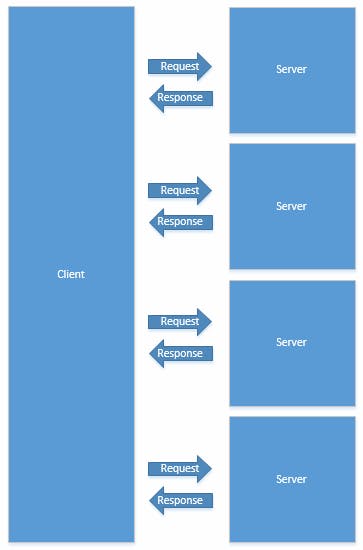Traditionally, and with most modern web servers, it has been better to serve site assets from multiple domains, rather than from a single domain. But why is this the case?

The answer is speed. This speed comes from two main sources:
Parallelization
Reduced header overhead
Parallelization
Serving assets from a single domain can be expressed in the following illustration.
 A single server receiving multiple requests and sending multiple responses
A single server receiving multiple requests and sending multiple responses
If you send 50 requests and each one takes 5 milliseconds for the server to process and respond to, that’s 250 milliseconds.
However, if we serve assets from multiple domains, it can look like this:
 Multiple servers receiving and responding to requests
Multiple servers receiving and responding to requests
If you send 50 requests to (a generally ridiculous) 50 servers and each one takes 5 milliseconds to respond, that’s only 5 milliseconds. In our extreme hypothetical scenario, we would save 245 milliseconds. In this case, the bottleneck would be the client’s ability to send and receive data.
Reduced header overhead
Every HTTP request and response includes a header. The header is meta information about the request/response. To name a few:
what data formats the client will accept
how long to keep the connection alive
from where was the client referred
If set, the header will also contain a cookie. The cookie is a piece of information that is attached to all requests to a particular domain. If your server’s domain set a cookie on the client, that client will send the cookie on every request it makes to your domain, including those requests for static assets.
The cookie is usually very small. But they can add up quick. If the cookie is 2 kilobytes, but there are 50 requests, that’s an extra 100 kilobytes for every page load. It can quickly get out of hand.
The solution is to make requests to a separate domain that has not set a cookie. Your dynamic content can be served from one domain with a cookie, but your static content should be served from a separate cookie-less domain. This will cut out the useless cookie information in the header and boost page speed.

